Bassoon Textbooks
-
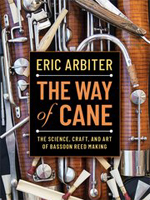
-
Arbiter, Eric
Way of Cane, The
The Science, Craft and Art of Bassoon Reed-making. Explores how different reed designs govern a bassoon's tone quality and enhance performance. Provides tools for bassoonists to achieve their ideal sound. Emphasizes holistic understanding of how cane behaves. - the publisher (table of contents)
(table of contents)
Category: Bassoon Textbooks
Item: 129486
Grade:
Price: $35.00
Availability: Ships in 10 to 15 Days - View Shopping Cart
-

-
Biggers
Contra-Bassoon, The - A Guide to Performance
Dedicated to Sol Schoenbach who suggested this book be written. Special acknowledgement is due to Mr. Robert Pfeuffer, former Contra-Bassoonist of the Philadelphia Orchestra who contributed ideas and information to many parts of this book. Contents includes: General Information (Posture and Equipment); Fingering; Tone Production; Reeds; Quality and Repair; Performance Problems; Fingering Chart. 48 pages.
Category: Bassoon Textbooks
Item: 068021
Grade:
Price: $20.99
Availability: Usually Ships in 24 Hours - View Shopping Cart
-

-
Eubanks, Mark
Quick Guide to Bassoon Reed Tuning
The latest step by step guide to bassoon reed tuning by Mark Eubanks continuing the work laid out in Advanced Reed Design and Testing. Includes topics and details relative to the break-in process, tip profilers, reed designs and shapes, blade profiles, gouge and cane; climate, bocals, tools, reed vibrancy, pitch centering, pad height, low register articulation, harmonic tuning, fork Bb tuning, slurring across the break, alternate fingerings, sanding techniques, knife techniques, and much more! 16...
Read More
Category: Bassoon Textbooks
Item: 111662
Grade:
Price: $16.99
Availability: Ships in 10 to 15 Days - View Shopping Cart
-
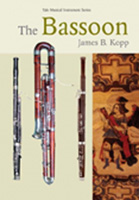
-
Kopp, James
Bassoon, The
Part of the Yale Musical Instrument Series, this welcome volume encompasses the entire history of the bassoon, from its origins five centuries ago to its place in twenty-first-century music. James Kopp draws on new archival research and many years' experience playing the instrument to provide an up-to-date and lively portrait of today's bassoon and its intriguing predecessors. He discusses the bassoon's makers, its players, its repertory, its myths, and its audiences, all in unprecedented detail....
Read More
Category: Bassoon Textbooks
Item: 118876
Grade:
Price: $50.00
Availability: Usually Ships in 24 Hours - View Shopping Cart
-

-
McKay et al, James R.
Bassoon Reed Manual - Lou Skinner's Theories
Category: Bassoon Textbooks
Item: 041310
Grade:
Price: $39.95
Availability: Ships in 10 to 14 Days - View Shopping Cart
-
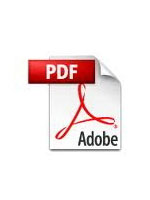
-
Pence
Teacher's Guide to the Bassoon
Now available as a free download. We have been alerted that the downlod is missing page 12, so here is the missing page. The download is free. The price shown is if you want a hard copy, and is for us to print out the entire book (printed on individual 20# 8.5 x 11 sheets, single sided, black & white, unbound). ...
Read More
Category: Bassoon Textbooks
Item: 000815
Grade:
Price: $7.95
Availability: Ships in 10 to 14 Days - View Shopping Cart
-

-
Popkin & Glickman
Bassoon Reed Making, 3rd edition
Category: Bassoon Textbooks
Item: 066052
Grade:
Price: $35.00
Availability: Ships in 10 to 15 Days - View Shopping Cart
-
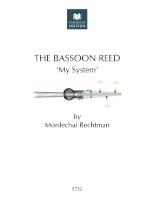
-
Rechtman, Mordechai
Bassoon Reed, The - My System
After a career as one of the world's finest orchestral players, Mr Rechtman is renowned for his beautiful, effortless style of playing. This he ascribes to his own unique system of reed adjustment, which he details in this booklet, with full colour photographs and instructions. (table of contents)
(table of contents)
Category: Bassoon Textbooks
Item: 125099
Grade:
Price: $28.95
Availability: Usually Ships in 24 Hours - View Shopping Cart
-
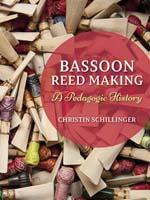
-
Schillinger, Christin
Bassoon Reed Making - A Pedagogic History
Withheld by leading pedagogues in an effort to control competition, the art of reed making in the early 20th century has been shrouded in secrecy, producing a generation of performers without reed making fluency. While tenets of past decades remain in modern pedagogy, Christin Schillinger details the historical pedagogical trends of bassoon reed making to examine the impact different methods have had on the practice of reed making and performance today. Schillinger traces the pedagogy of reed mak...
Read More
Category: Bassoon Textbooks
Item: 115675
Grade:
Price: $30.00
Availability: Usually Ships in 24 Hours - View Shopping Cart
-
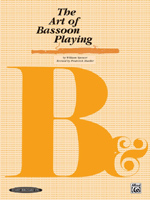
-
Spencer, William & Fred Mueller
Art of Bassoon Playing (Mueller)
Fine bassoon teachers are a rarity in all but cities with major symphony orchestras and/or a university with a distinguished music department faculty. William Spencer took up the challenge of providing material for the serious bassoonist with The Art of Bassoon Playing, published in 1958. With William Spencer's approval, Frederick Mueller took on the task of bringing to notice recent changes in bassoon playing, pedagogy and manufacture, resulting in revised edition of The Art of Bassoon Playing. ...
Read More
Category: Bassoon Textbooks
Item: 000816
Grade:
Price: $12.95
Availability: Usually Ships in 24 Hours - View Shopping Cart
-
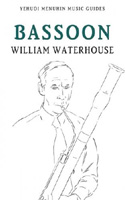
-
Waterhouse
Bassoon
Yehudi Menuhin Music Guide
Category: Bassoon Textbooks
Item: 118877
Grade:
Price: $24.95
Availability: Ships in 10 to 15 Days - View Shopping Cart
-

-
Weait, Christopher
Bassoon Reed Making
An Illustrated Basic Method. 52 pages. 155 detailed photographs detail every step. Reed is made from gouged, shaped and profiled (GSP) cane. No expensive tools or machinery required. (contents & sample pages)
(contents & sample pages)
Category: Bassoon Textbooks
Item: 071137
Grade:
Price: $29.00
Availability: Ships in 10 to 15 Days - View Shopping Cart
-

-
Weait, Christopher
Bassoon Reed Making
34 pages. (contents & sample pages)
(contents & sample pages)
Category: Bassoon Textbooks
Item: 013434
Grade:
Price: $16.00
Availability: Usually Ships in 24 Hours - View Shopping Cart
-
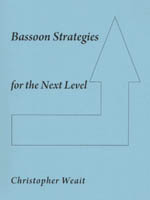
-
Weait, Christopher
Bassoon Strategies for the Next Level
This is a book of practicing and performing strategies for bassoonists and other wind instrumentalists seeking motivation for practicing, solutions to playing problems, and continued development as creative, independent musicians. - the composer Chapters entitled: Musicianship (phrasing, playing melodies, improvisation, tenor clef, performer distractions, constructive self-criticism, etc.); Warming-Up; Practicing; Practicing Strategies; Scales & Etudes; Physical Matters; Breathing & Tone; Dy...
Read More
Category: Bassoon Textbooks
Item: 065492
Grade:
Price: $40.00
Availability: Usually Ships in 24 Hours - View Shopping Cart
-

-
Weait, Christopher
Construccion de Canas de Fagot-Tecnica Basic (Rodriquez & Traba)
Category: Bassoon Textbooks
Item: 052136
Grade:
Price: $16.00
Availability: Ships in 10 to 15 Days - View Shopping Cart
-

-
Weait, Christopher
Student's Guide to the Bassoon
Category: Bassoon Textbooks
Item: 065493
Grade:
Price: $5.00
Availability: Ships in 10 to 15 Days - View Shopping Cart
More Options
- Use our Custom Order Page to special order items you can't find.
- Use our Catalog Order Page to order items from a printed catalog, or if you already know our catalog number for the item(s) you're interested in.
- And as always, feel free to E-mail us with your questions!
